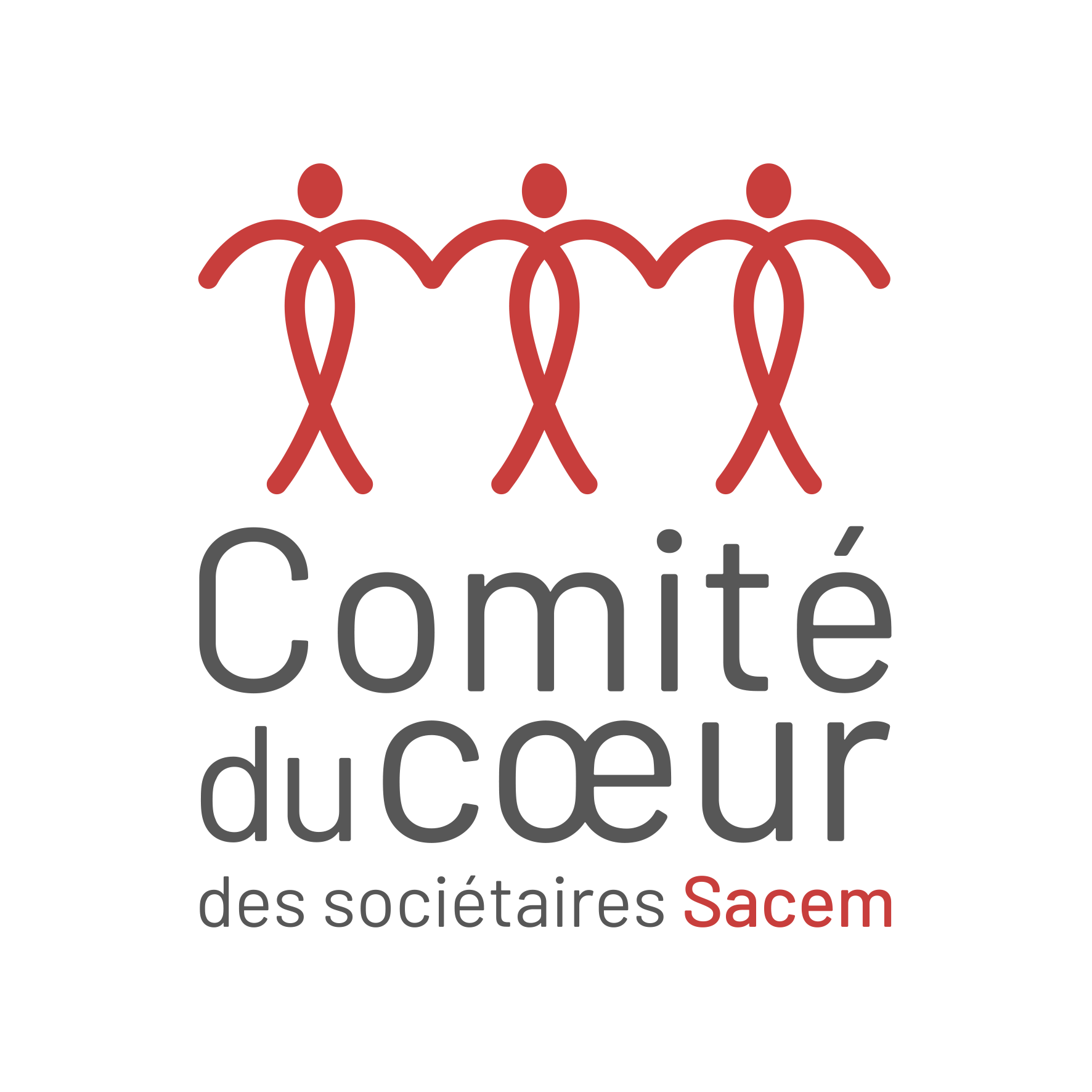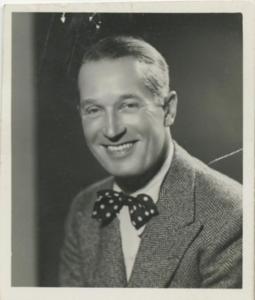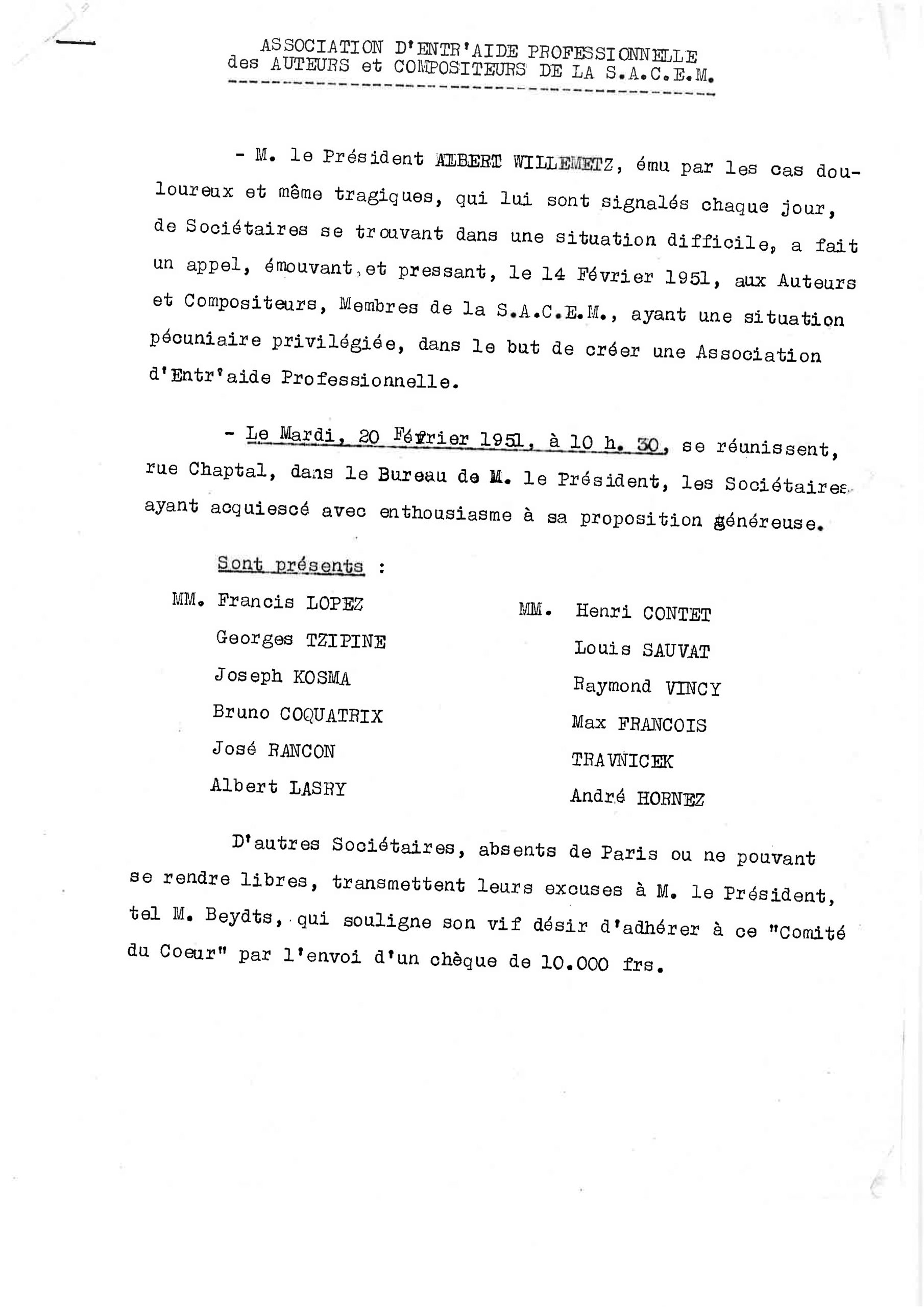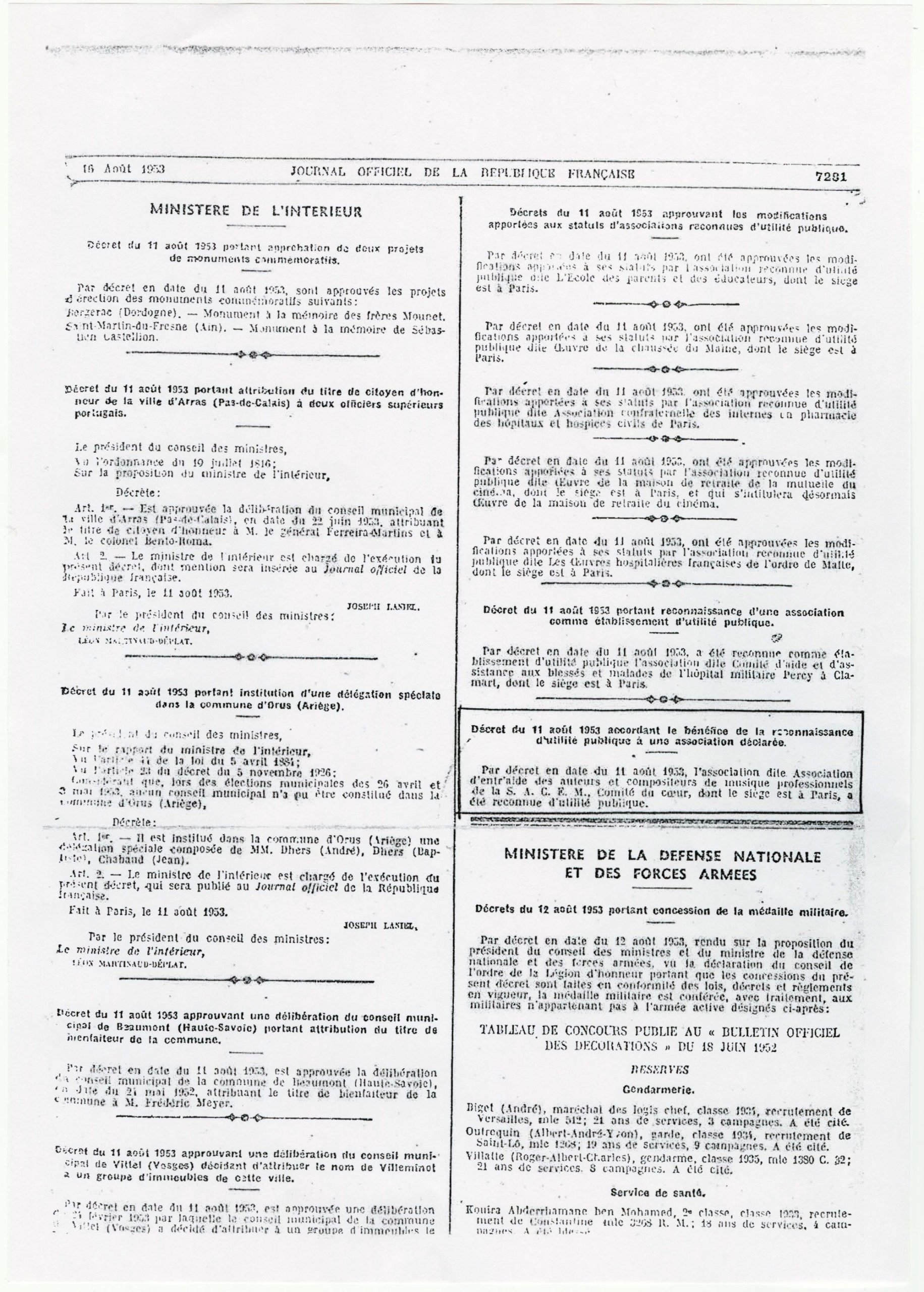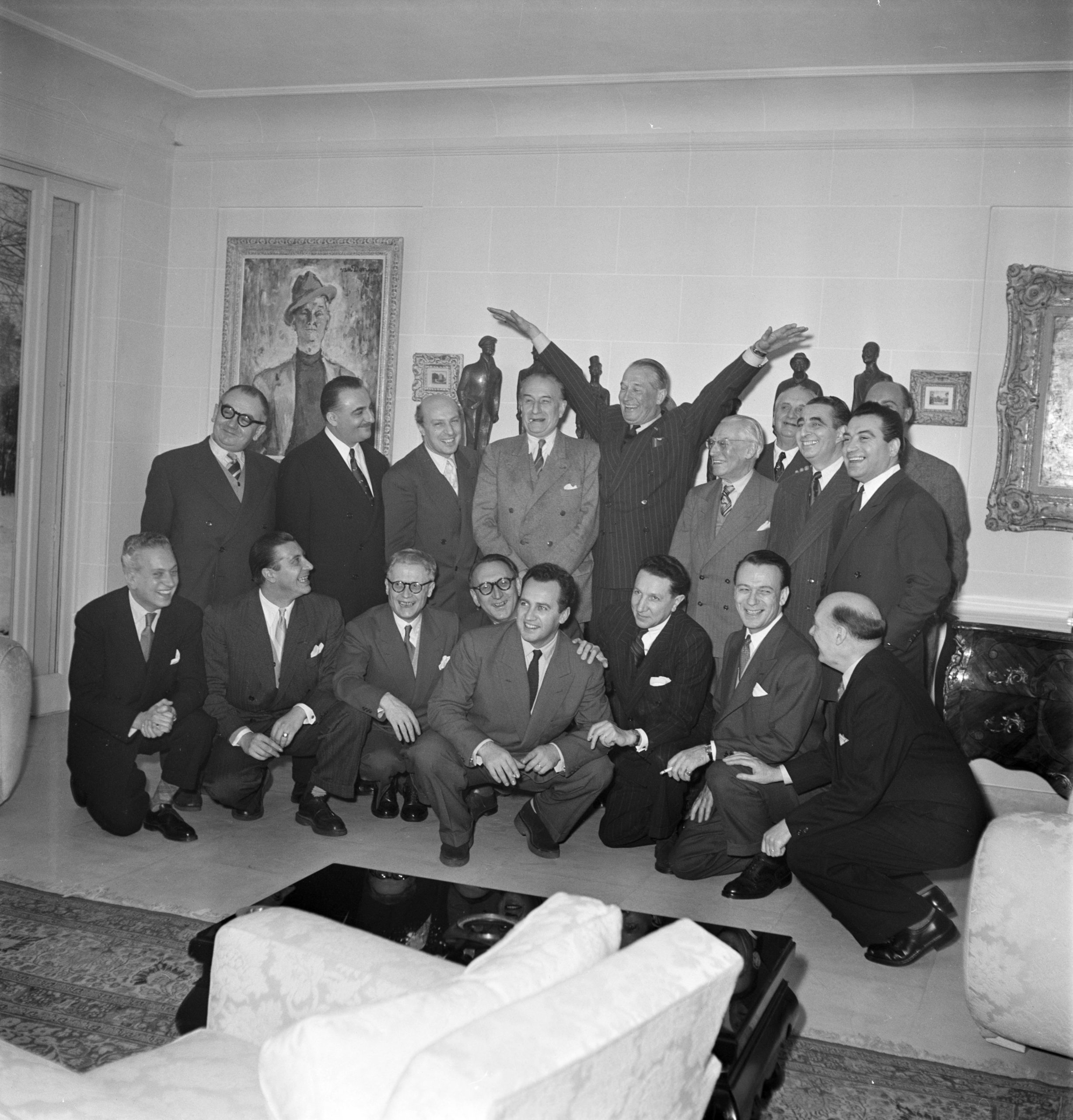Our history
The pioneers of the Comité du cœur.
From left to right, standing around Maurice Chevalier : Louis Poterat, author of J’attendrai ; Bruno Coquatrix, composer of Clopin-clopant ; Louiguy, composer of La vie en rose ; Albert Willemetz, author of Valentine ; Édouard Ravel, brother and heir to Maurice Ravel ; Jean Rodor, author of Sous les ponts de Paris ; Raymond Vincy, author of La samba brésilienne ; Henri Bourtayre, composer of Fleur de Paris ; Louis Sauvat, composer of Une canne et une casquette.
From left to right, kneeling : Georges Tzipine, film composer ; Max François, author of Oublie-moi ; Henry Verdun, composer of Moi, j’fais mes coups en-dessous ; Van Parys, composer of Ça s’est passé un dimanche ; Francis Lopez, composer of La belle de Cadix ; René Sylviano, composer of Premier rendez-vous ; Henri Contet, author of Boléro ; André Travnicek, film composer.
Photo credit: Maurice Jarnoux/ParisMatch/Scoop
In 1951, a group of prominent creators, convinced of their solidarity duty towards their peers in financial difficulty, formed an association: the Comité du cœur, as named in 1953, was born.
Building up the association
Let’s go back in time: in 1860, a relief fund was set up within a newly created Sacem thanks to Rossini’s royalties. It was not until almost a century later, in 1951, that a group of fifteen Sacem members signed a decree founding a new mutual aid association. Its president, Albert Willemetz, was a prolific songwriter who wrote more than 3,000 songs, many of them for Maurice Chevalier. Among the association’s founders, there was Bruno Coquatrix, future director of L’Olympia, and Henri Contet, who wrote Édith Piaf’s legendary Padam, padam.
In 1953, the association was registered as a charity and was given its final name: the Comité du cœur was born. Nobody doubted its public purpose: “Our careers are more like a labyrinth than a motorway”, says Claude Lemesle, author and vice-president of the Comité du cœur. “Our lives, far from being a long, quiet ride, are constantly up and down, and the mad cow is more often followed by the lean cow than the fat calf.”
Maurice Chevalier’s donation
French singer, songwriter, actor, lyricist, dancer and comedian. He was very close to the Comité du cœur’s founders and joined them as well because, as a man with an enormous success in France and the United States, he had not forgotten his humble origins and the difficult times he went through as a child, forced to leave school to work from the age of ten.
We remember not only the man in the bow tie and boater hat, but also his smile and huge generosity. In 1952, embracing the Comité du coeur’s mission of mutual aid and relief, Maurice Chevalier decided to donate his Cannes villa, La Bocca, one of the most beautiful mansions in the Côte d’Azur, as a Christmas gift to the association. Bungalows were built in its three-hectare estate, giving birth to the ‘Maurice Chevalier Village’, which provided shelter for professional songwriters and composers who were struggling to survive.
As the bearer of a certain French cliché, which he played with humour, Maurice Chevalier was a great ambassador of French culture throughout the world. Thanks to his talent and determination, he reached heights of popularity. His unique style, his cheekiness and his unmistakable voice made him a major artist of our heritage.
The Comité du cœur today
Solidarity is a core value rooted in the Comité du cœur’s DNA. Since 1951, the Comité du cœur has been working to support and help its members going through any difficult times they may have encountered throughout their careers. Today, it is more relevant than ever, working alongside them to assist and encourage authors and composers with financial and social support for those in distress.
With its 1,500 members, the Comité du cœur helps more than 200 people through donations and bequests. It also pays tribute to creators by granting eponymous awards, made possible by their bequests.
During the Covid-19 health crisis, the Comité du cœur set up alongside Sacem, an exceptional support scheme to help those creators that were most affected.
The Comité du cœur, acting together as one.
